Ruriko-in, located at 55 Higashiyama, Kamitakano, Sakyo Ward, Kyoto City, was originally built as a villa by Genataro Tanaka, a prominent figure from a noble family and political circles in Kyoto. After its completion, the villa was named “Kikakutei” by Sanjo Sanetomi, the Grand Minister of State during the Meiji period. Between the Taisho and Showa periods, renowned Japanese architect Sotoji Nakamura and garden designer Toueimon Sano undertook extensive renovations on the villa.
In 2005, the villa was converted into a temple and renamed “Muryouju-san Komyo-ji Ruriko-in,” becoming part of the Jodo Shinshu Higashi Honganji sect. The temple’s name, Ruriko-in, refers to the vibrant interplay of light and color within its gardens, where the lush green moss and delicate play of shadows create a serene atmosphere. The term “Ruriko” originally refers to a bright blue with purple undertones, symbolizing a radiant and brilliant hue. Today, it is often used to describe something luminous and colorful, much like the stunning beauty found at Ruriko-in Temple.
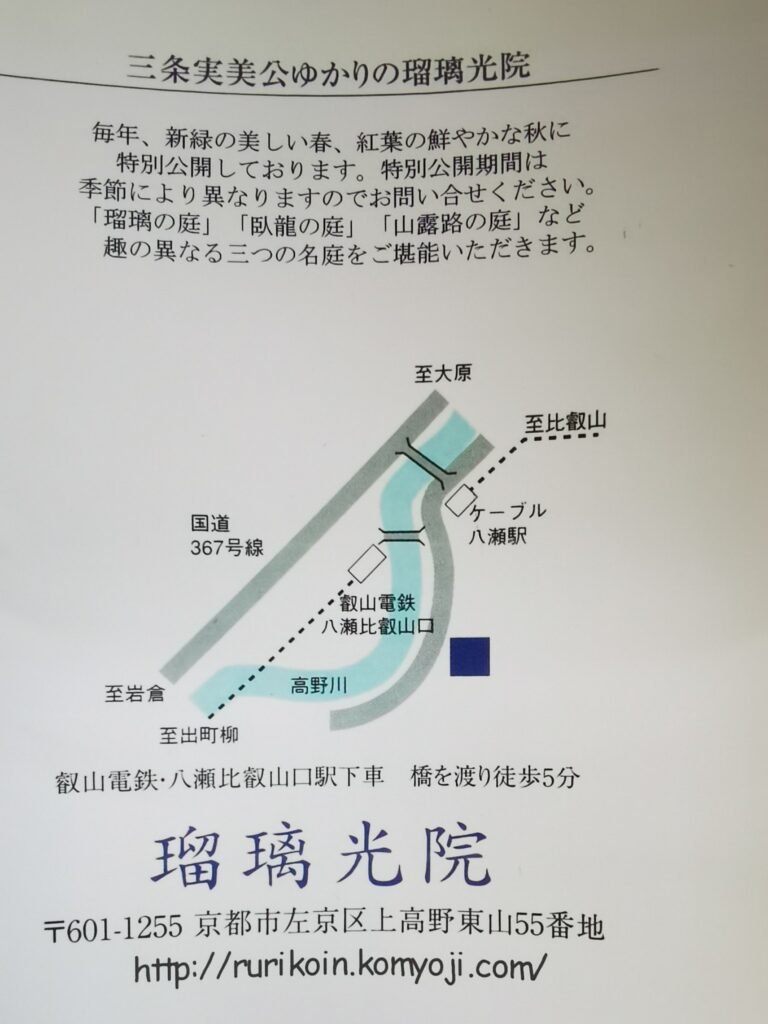
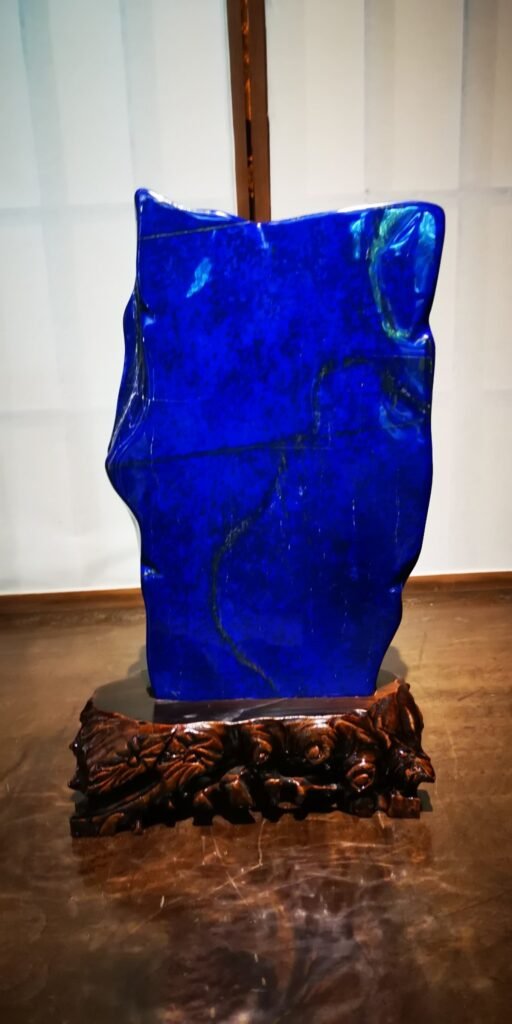
Taking Kyoto Bus No. 17 and getting off at Yase-Hieizanguchi Station, a peaceful ten-minute walk along the banks of the Kamo River will lead you to the serene entrance of Ruriko-in Temple. Unlike many famous temples in Kyoto that feature grand torii gates or other prominent structures, Ruriko-in’s entrance is modest, with an old wooden fence that exudes simplicity. The central gate is understated, even appearing somewhat humble. To the left of the gate, a small wooden plaque reads “Kikakutei” , while on the right, another plaque bears the name “Ruriko-in” . This unassuming entrance contrasts with the temple’s inner beauty, adding to the sense of quiet elegance.

The modest gate of Ruriko-in may not hint at what lies beyond, but once you step inside, it feels as though you’ve entered the world of The Wizard of Oz. The path, known as the “Sanroji Garden,” is lined with layers of towering trees, shrubs, grass, and moss, creating a lush green paradise. As you stroll along the shaded path, the ethereal beauty of the garden surrounds you, evoking a sense of tranquility. The verdant foliage instantly soothes the weary traveler, washing away the stress and fatigue of the outside world, and immersing you in a serene, almost magical atmosphere.
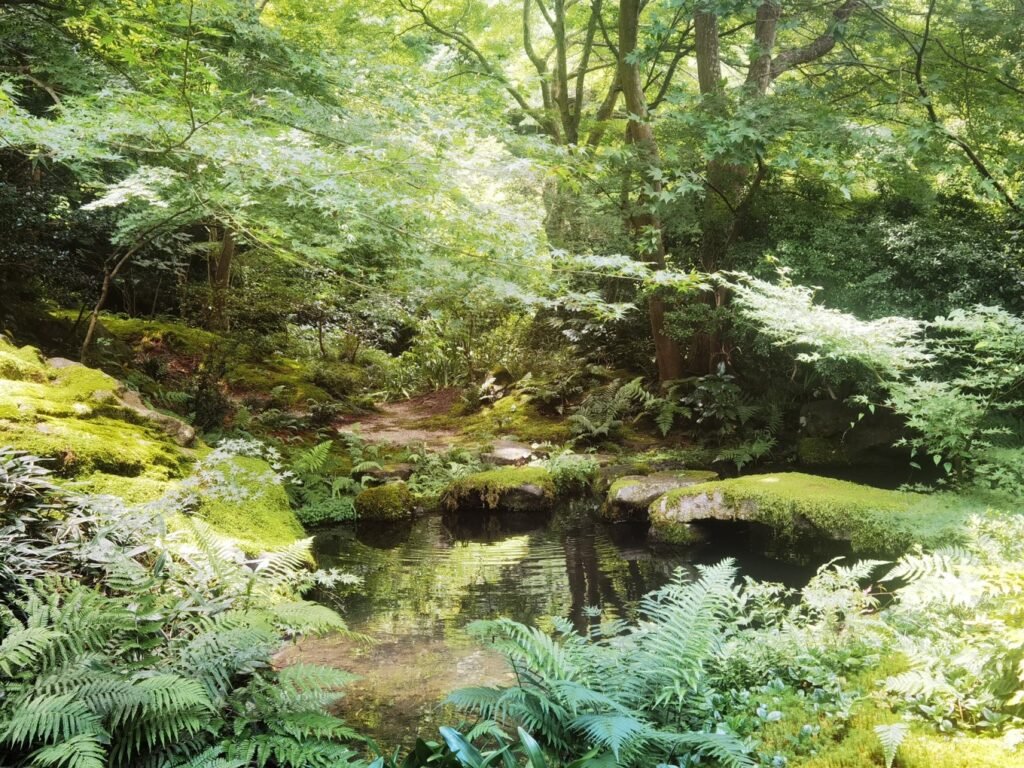

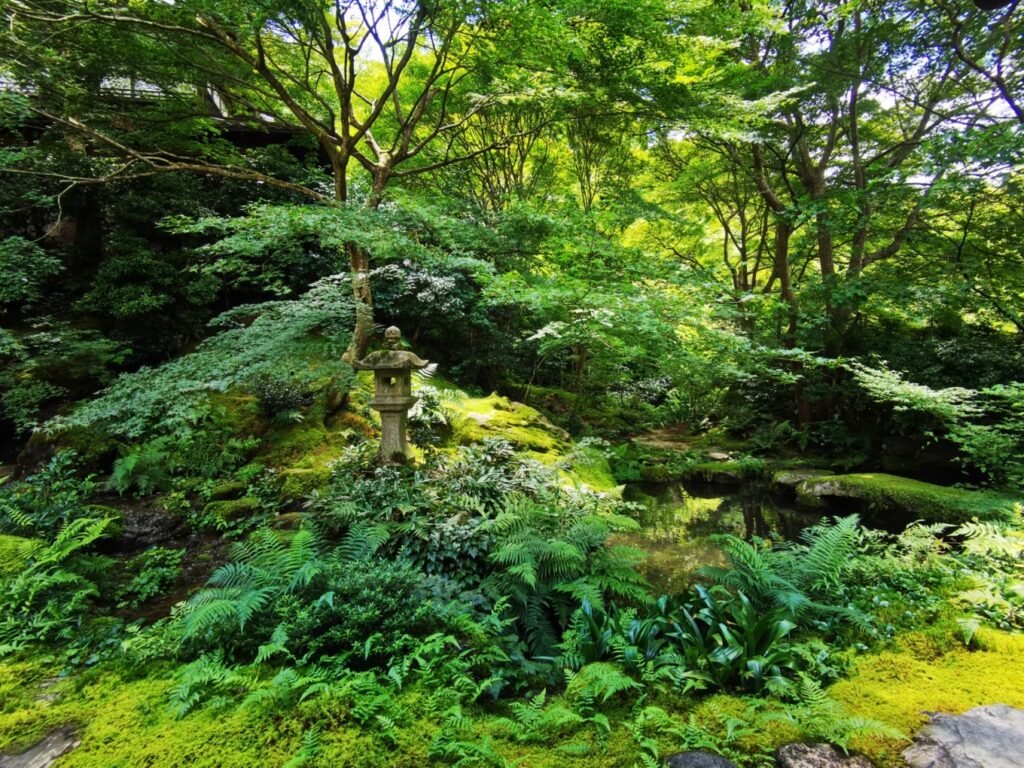
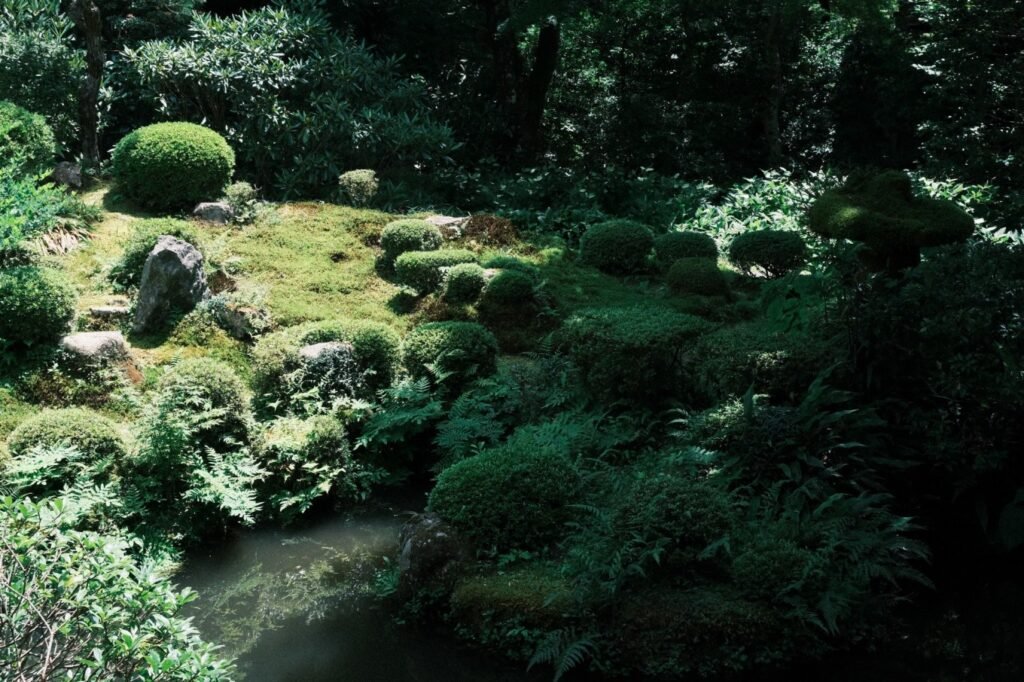

The clear mountain stream running alongside the path adds a mystical energy to the temple grounds. Crossing a small stone bridge, you catch a glimpse of a traditional Japanese building partially hidden among ancient trees—this marks your arrival at Ruriko-in. The three-story structure is nestled peacefully within its surroundings, with two tranquil gardens that exude a sense of calm and serenity. The harmony between the architecture and nature makes this place feel like a peaceful retreat from the outside world.
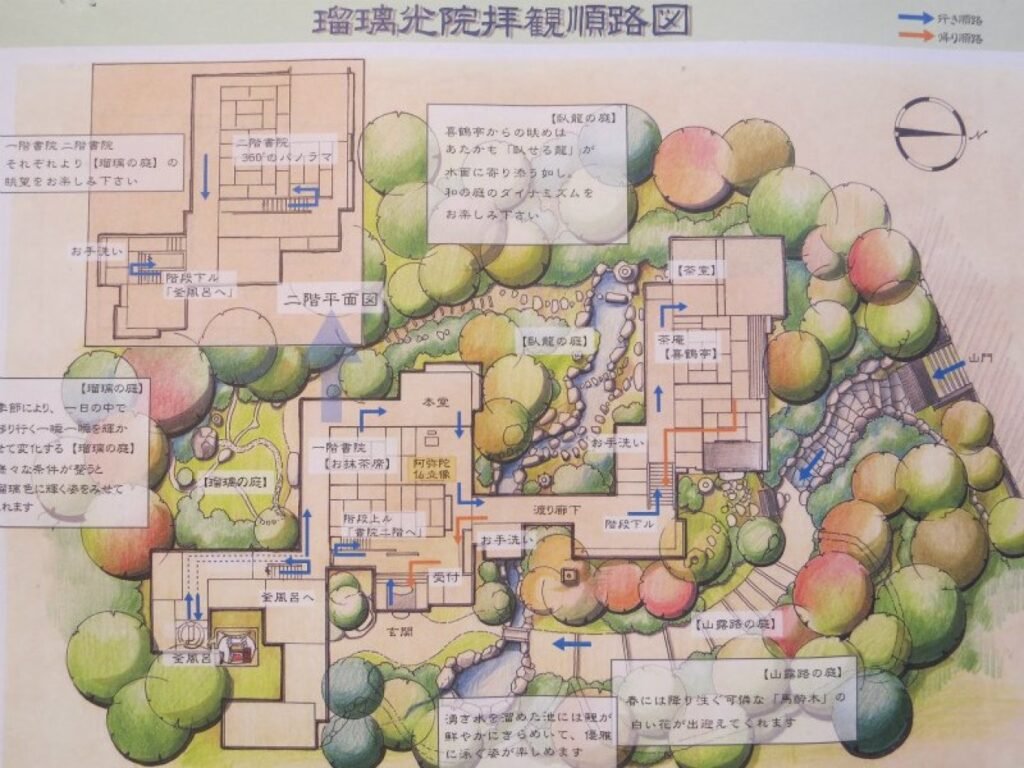


Entering through the entrance hall, visitors are asked to remove their shoes and place them in a provided plastic bag to carry with them inside. As you ascend the pathway flanked by over 100 varieties of maple trees, you reach the first-floor veranda, seamlessly blending the indoor space with the garden outside. Facing the lush Ruriko Garden, you can sit on a grass mat under the eaves, enjoy a cup of matcha paired with two red bean sweets, and simply let your mind drift. Closing your eyes, you release all worldly concerns, forgetting the conflicts and struggles of life. The tranquility of the moment washes away all restlessness and desire, bringing a deep sense of inner peace.
As you gaze out at the vibrant greenery, the phrase “Buddhism has no intent, but mortals have a pure heart” takes on new meaning. In this serene temple beneath Mount Hiei, it feels as if your soul is being reset. Entering burdened by worries, distractions, and desires, you leave with your mind unburdened, your heart enlightened, and renewed hope and dreams rekindled.


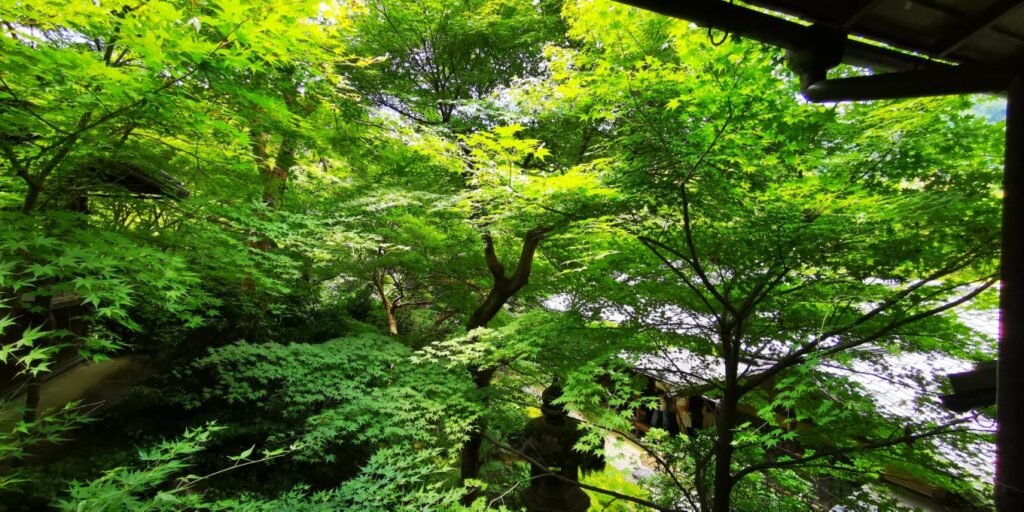
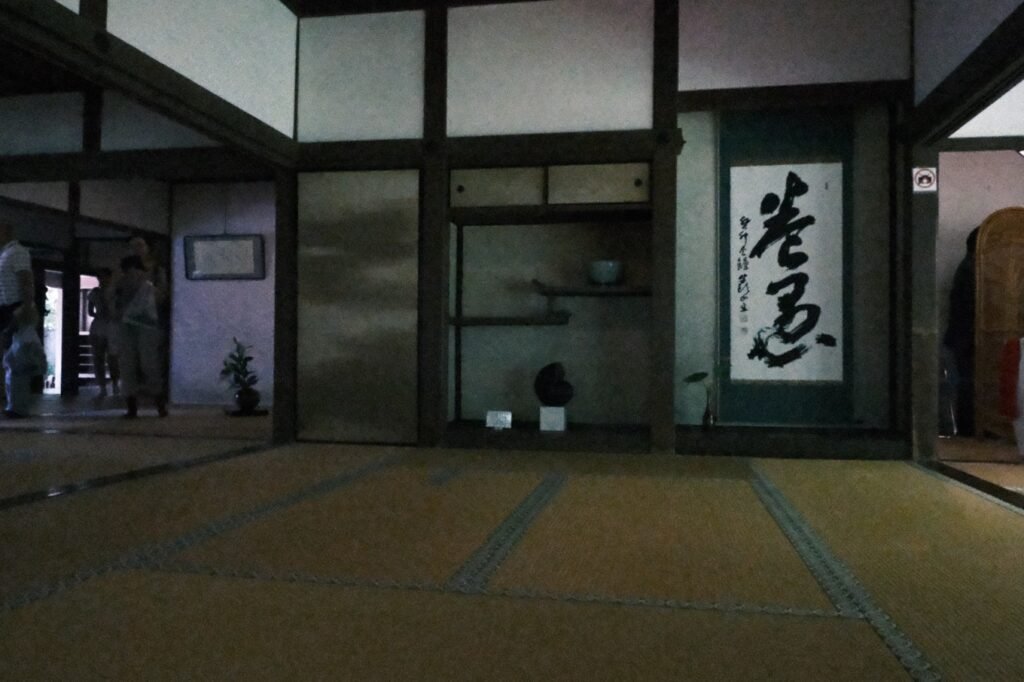
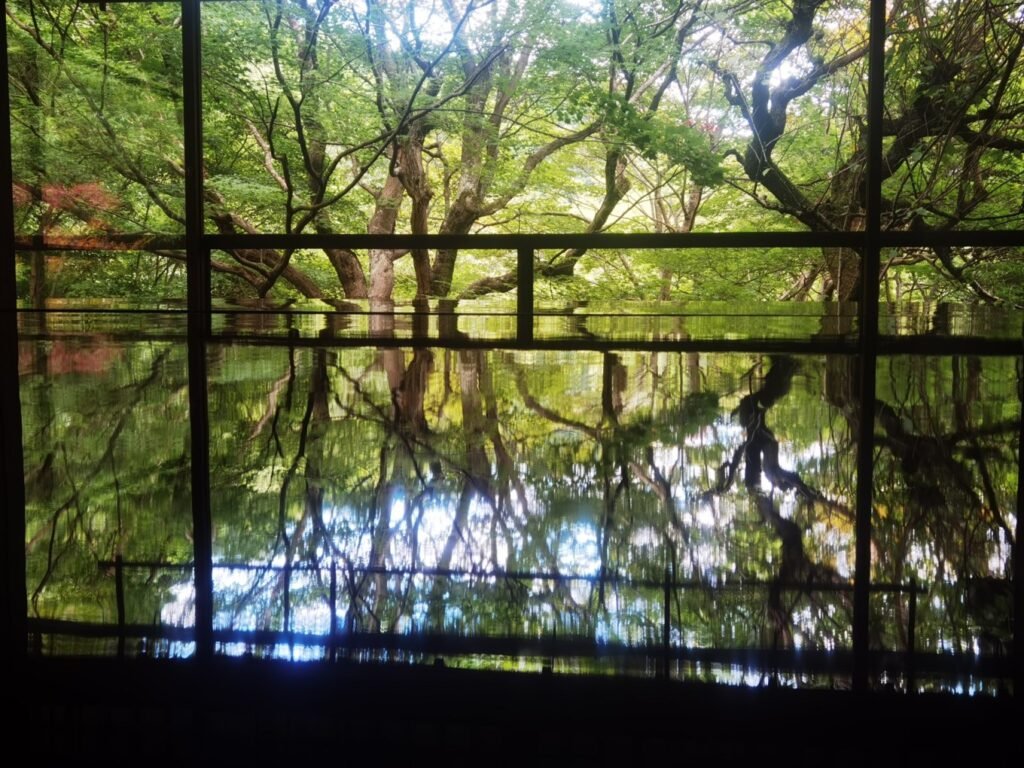
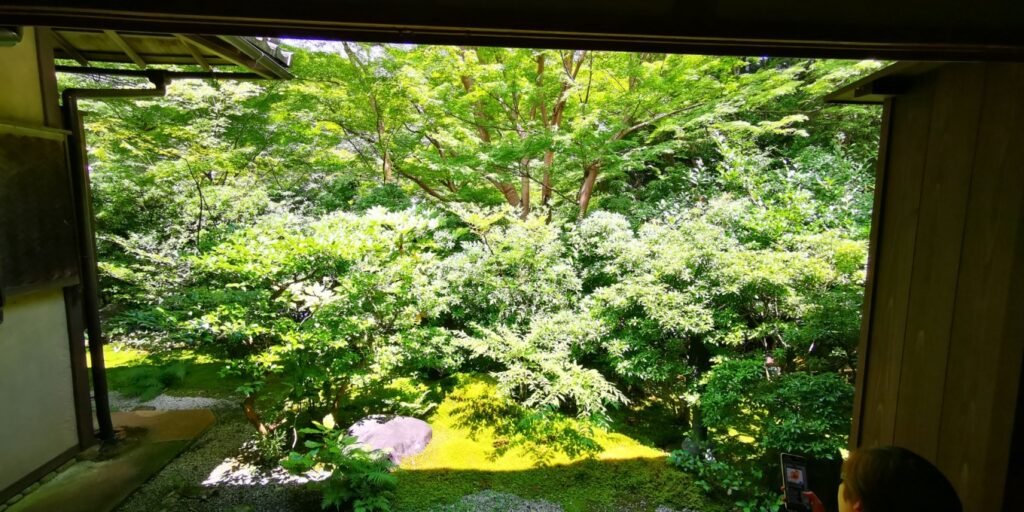
Westerners often prefer a direct approach, adorning and embellishing churches with lavish and opulent elements. In contrast, Easterners tend to create environments rich in meaning through serenity and elegance, subtlety and depth, simplicity and antiquity. This approach, rooted in Eastern philosophy, offers a space that is simple yet not monotonous, where emptiness is filled with presence, and spaces left blank invite reflection rather than loss. It evokes contemplation and understanding, though one may not immediately grasp its full depth. This subtle beauty naturally inspires awe and joy, leading to a quiet elevation of the spirit.
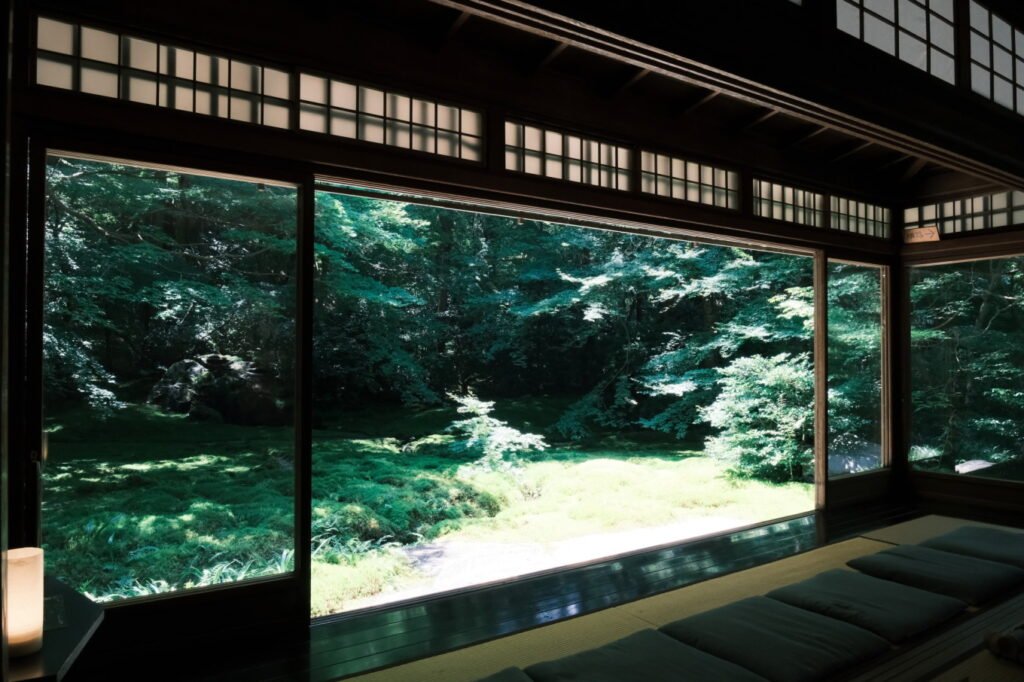
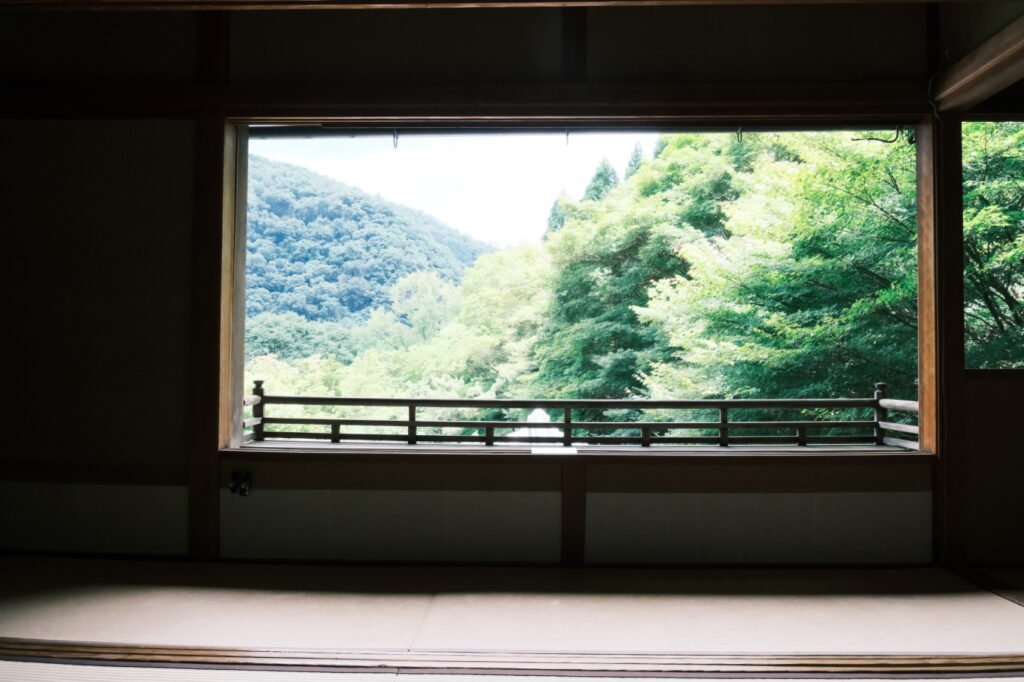
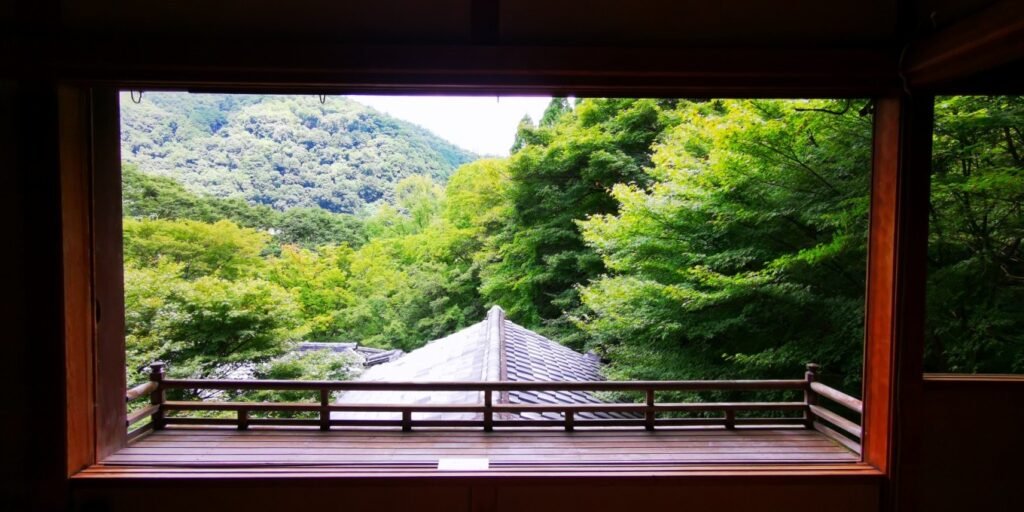
Upon reaching the second-floor study, you are greeted by a simple yet striking setup: a small, reflective black lacquer table placed in the middle of the tatami floor. The surrounding windows have no glass or curtains, with the wooden frames themselves acting as natural borders, giving the space a framed, artistic feel. Outside the windows lies the Ruriko Garden, covered in a variety of mosses with different shades of green. The fresh buds, green branches, and red leaves reflect beautifully on the polished surface of the table, creating what is known as “tokomomiji” (床もみじ), or the reflection of autumn leaves on the table.
Even though it wasn’t autumn, and the famed red leaves were absent, the summer greenery was equally mesmerizing. The various types of vegetation displayed subtle differences in their shades of green, adding depth and richness to the landscape. Here and there, a few out-of-season red maple leaves boldly stood out, contrasting against the sea of green and drawing attention with their brilliance.



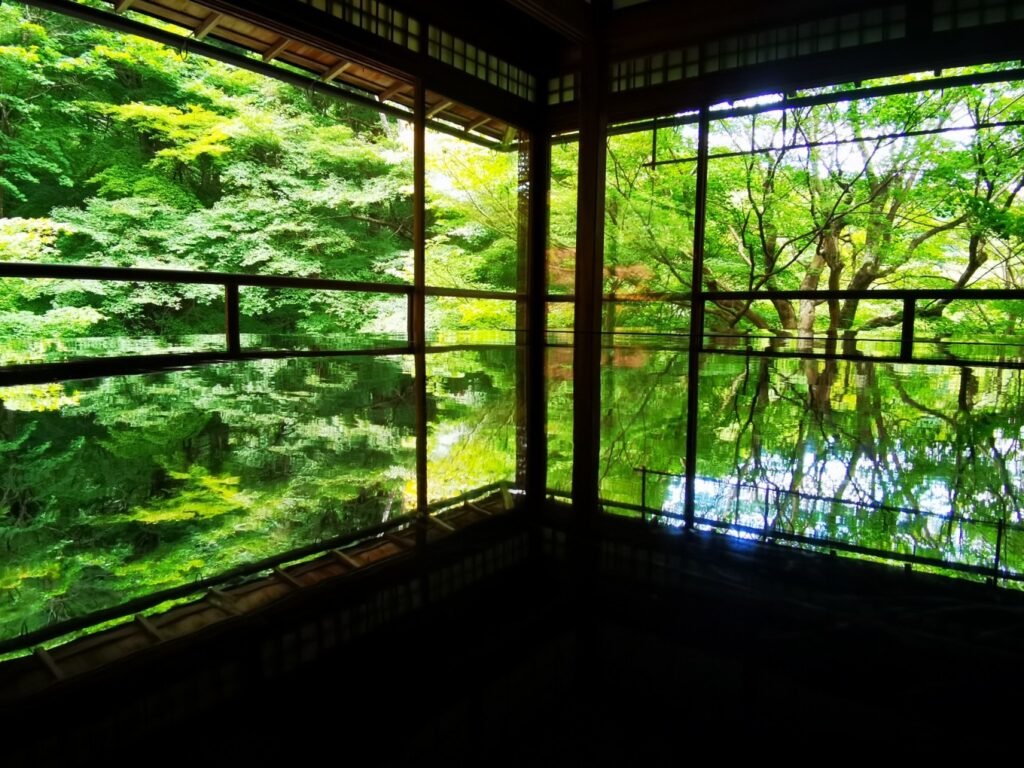
The vibrant maple leaves outside form a perfect reflection on the smooth, glossy low table in front of the window, with the mirror image and reality harmoniously blending. The scene outside seamlessly merges with the interior, creating a moment so serene that it makes you hold your breath, afraid that even the slightest exhale would ripple through the peaceful harmony like a stone tossed into still water, shattering the dreamlike reflection. One can only imagine how breathtaking it would be in late autumn, with trees ablaze in red and orange, their reflections on the black table transforming the scene into something truly exquisite.
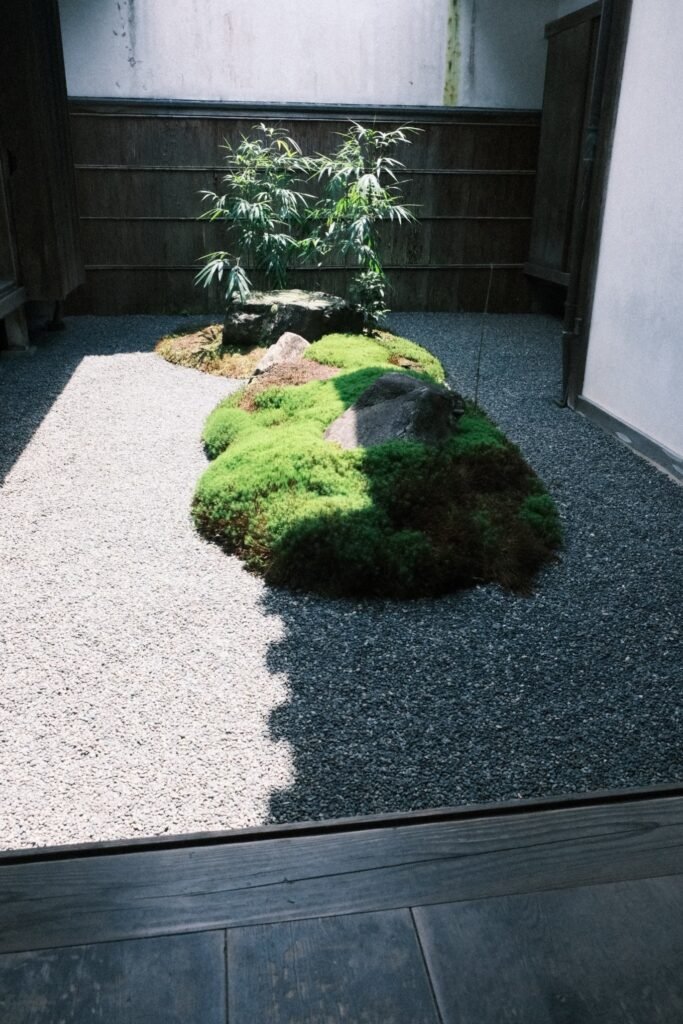
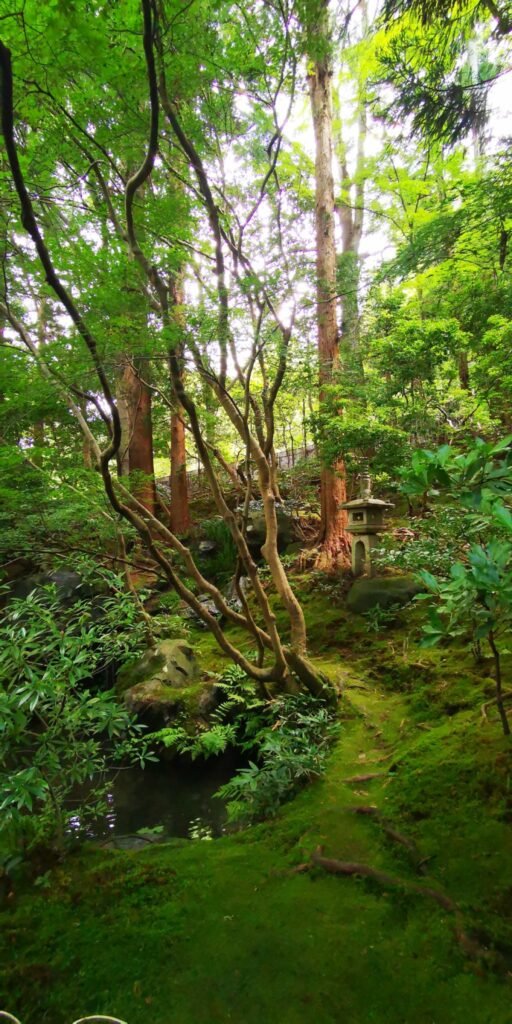
As you wander through Ruriko-in, you’ll find that with every step, the scenery changes. From the same room, looking out through the window from different angles and at different times, the tranquil greenery framed by the window lattices shifts and stretches, constantly renewing itself. This ever-changing, quiet beauty repeatedly washes away the noise of the world, prompting one to sigh, “In the heavens, a glass lantern shines, while in the garden, a ray of light—where does it go?”



